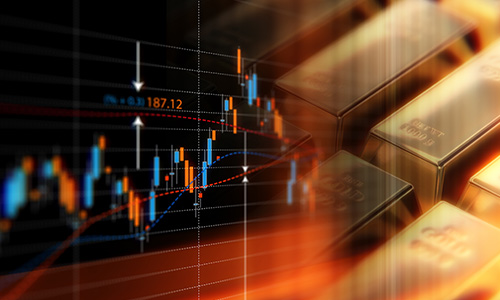Blitz News Digest
Stay updated with the latest trends and insights.
Gold Rush or Fool's Gold? What Every Trader Needs to Know
Discover whether the gold rush is a treasure or trap for traders. Uncover insights every trader needs to navigate this sparkling market!
Understanding the Basics: What Drives the Gold Market?
Understanding the dynamics of the gold market is essential for investors and enthusiasts alike. One of the primary drivers is global economic stability. Gold is often viewed as a safe-haven asset, meaning that during times of economic uncertainty or volatility, investors flock to gold to preserve their wealth. Factors such as inflation rates, interest rates, and geopolitical tensions significantly impact demand. When confidence in currencies wanes, gold becomes a preferred alternative, leading to price increases.
Another key driver is the supply and demand balance in the gold market. Supply is influenced by mining production, recycling efforts, and central bank holdings. On the demand side, jewelry and industrial usage, as well as investment demand through ETFs and coins, play crucial roles. An increase in consumer demand, especially in countries like India and China, can lead to price surges. Thus, understanding these factors is vital for anyone looking to navigate the complexities of the gold market effectively.

Is Gold Still the Safe Haven Asset of Choice?
In times of economic uncertainty, gold has long been considered a safe haven asset. Its value tends to remain stable or even rise when traditional markets experience volatility. Investors often turn to gold as a hedge against inflation and currency fluctuations, making it a popular choice during financial crises. As central banks around the world continue to inject liquidity into their economies, the demand for gold is poised to increase, reinforcing its status as a go-to asset for risk-averse investors.
Nonetheless, the landscape is evolving. With the rise of digital currencies and alternative investments, some analysts are questioning whether gold can maintain its position as the ultimate safe haven. While factors such as geopolitical tensions and economic instability still drive investors towards gold, emerging assets may provide new opportunities for wealth preservation. Ultimately, whether gold remains the preferred safe haven asset will depend on market conditions and investor sentiment in the coming years.
Fool's Gold: Common Misconceptions About Trading Gold
Fool's Gold is not just a term for the misleading appearance of pyrite; it also represents a set of common misconceptions about trading gold. Many novice traders believe that gold is a guaranteed path to wealth, ignoring the fact that its market is subject to the same volatility as other commodities. This misconception can lead to overconfidence, prompting individuals to invest significant capital without proper research or risk assessment. Additionally, some traders might assume that gold will always retain its value, failing to consider the economic factors and global events that can affect gold prices.
Another prevalent myth is that trading gold is exclusively for large investors or institutions. In reality, advancements in technology and the rise of online trading platforms have democratized access to the gold trading market. Now, even small investors can participate in gold trading through exchange-traded funds (ETFs) or fractional ownership. However, potential traders should be cautious of the fees and commissions associated with these investments, as they can erode profits. Understanding these nuances is crucial to successfully navigating the gold market and avoiding the pitfalls of Fool's Gold.